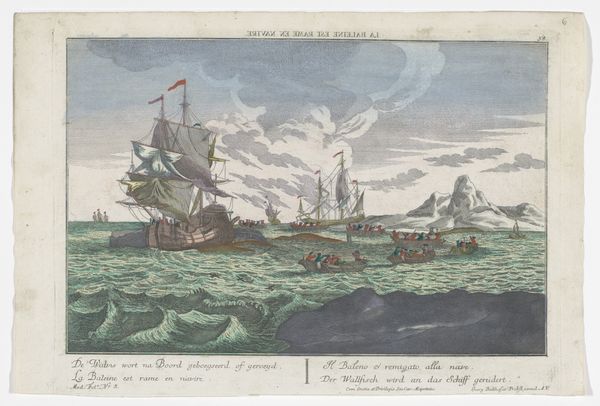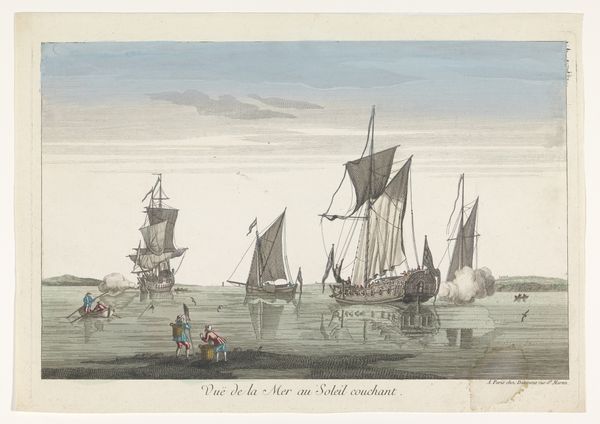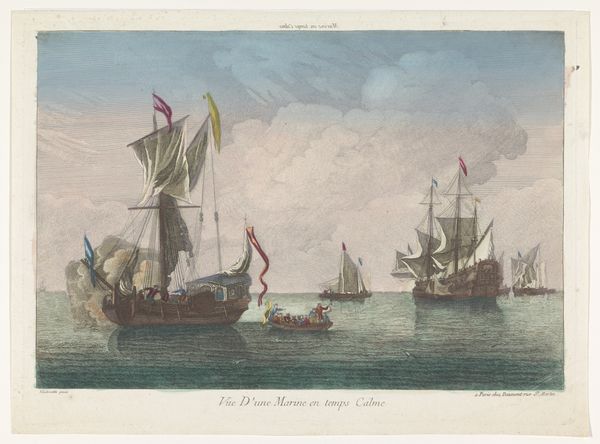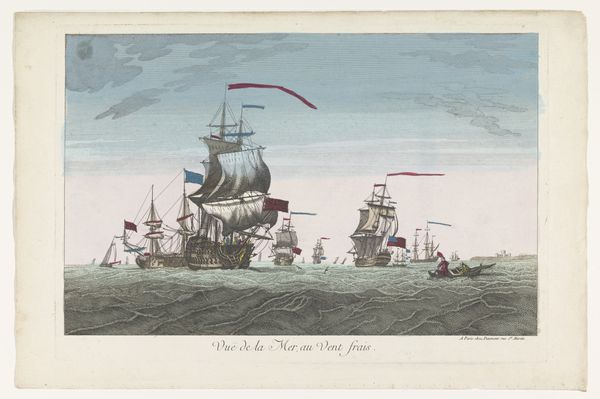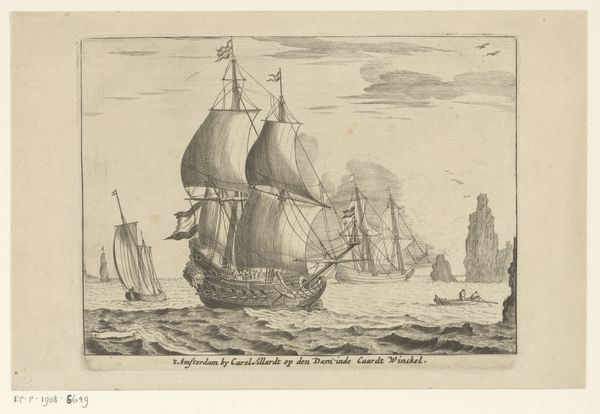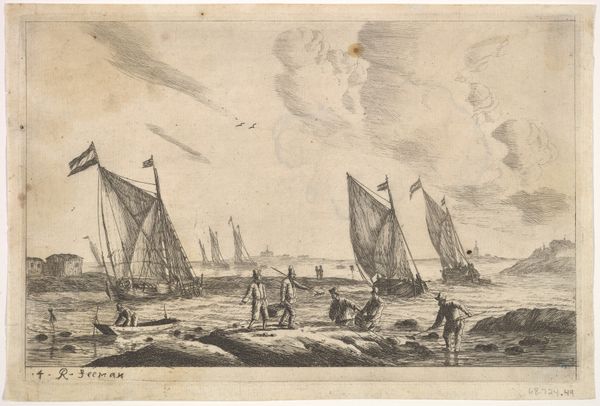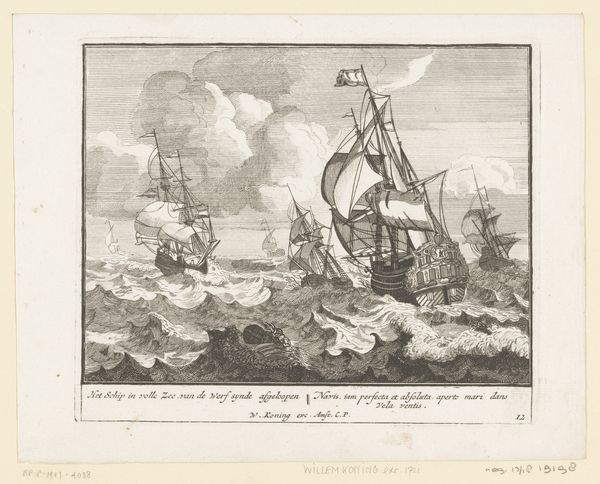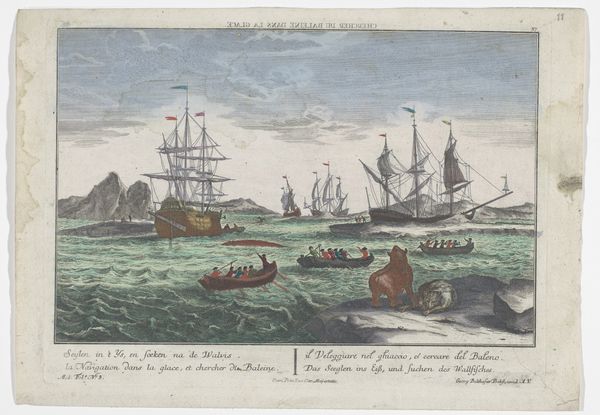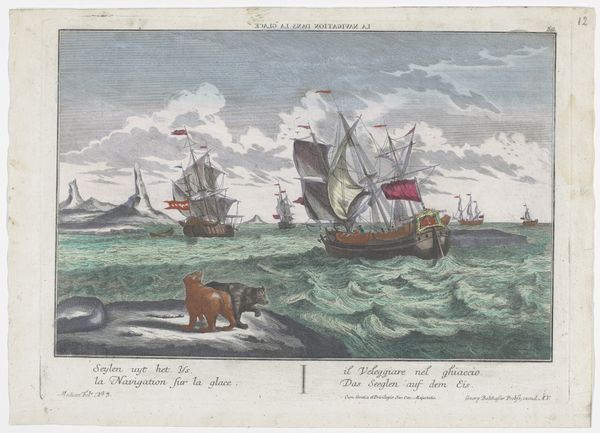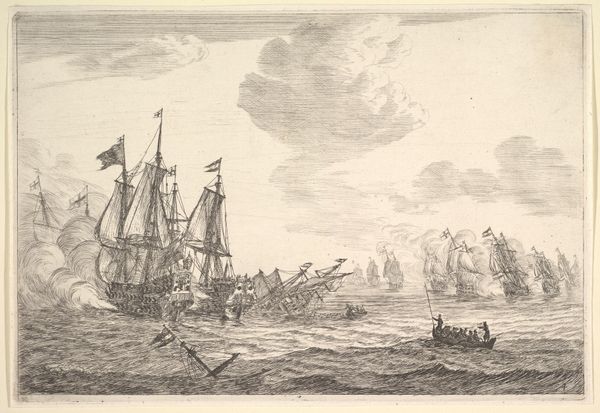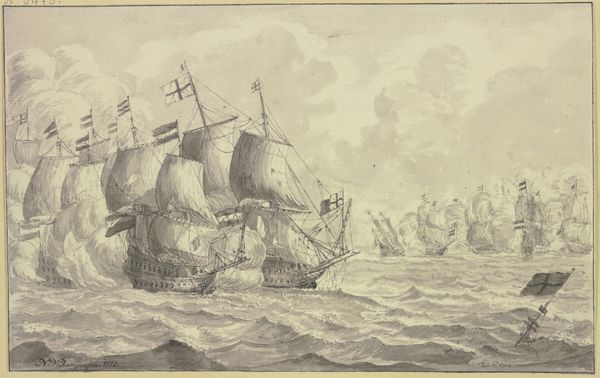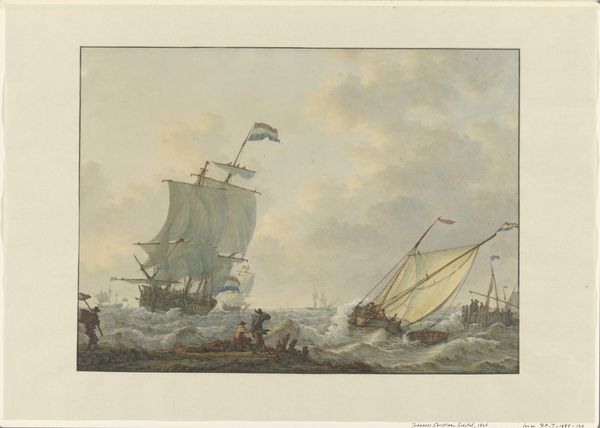
print, etching
#
baroque
# print
#
etching
#
landscape
#
genre-painting
Dimensions: height 292 mm, width 423 mm
Copyright: Rijks Museum: Open Domain
Curator: Immediately striking, isn't it? The energy of the open sea seems palpable. Editor: It is, there’s a certain drama, though quite muted, in the rendering of the waves. So, let's consider this artwork; it's titled "Zeegezicht met schepen op open zee" or "Seascape with Ships on the Open Sea," an etching from sometime between 1745 and 1775, created by Jean-François Daumont. Curator: Knowing it's an etching immediately grounds me in the process. I think of the engraver’s workshop, the tools, the acid biting into the metal plate. What would their daily labor look like in the production of similar landscapes or genre paintings in the Baroque style? I bet we can trace where the paper came from, or the origins and availability of ink at the time. The material circumstances influence what the final artwork even *can* be. Editor: Absolutely. And situating this seascape in its socio-political context reveals so much. Consider the ships themselves – vessels of trade, yes, but also tools of colonial expansion. The open sea wasn't "open" to everyone; it was a contested space, a site of power, often marred by violence and exploitation. Who benefited from this seafaring commerce? Who was excluded, or actively harmed, by it? Curator: The flags intrigue me as well. They speak to trade routes, naval power, and international relations—all material markers on these seafaring vessels that suggest larger, interconnected markets of material exchange. Where are these ships going? And what cargo are they transporting? These things mattered deeply, shaping the engraver's production, because these ships were like the tractor trailers of their time, hauling and enabling exploitation. Editor: Exactly! And looking closer, we might unpack the imagery of the sea itself. It can be seen as a symbol of freedom, of limitless potential. But also one of danger, uncertainty, and the awesome, sometimes destructive power of nature. Thinking of ship passengers' experiences reminds me of histories of migration, of displacement, both forced and chosen. Curator: It all cycles back to that physical interaction—the materials, labor, the global networks of distribution involved. These all point to complex power dynamics but through seemingly quotidian activities. The mundane, everyday image of ships on the water is but a moment in the vast currents of trade, conflict, and exchange. Editor: I think, for me, I will not see sailboats in quite the same way. Now I recognize, a work like this pushes me to understand history's multiple, interwoven strands. Thank you for your insight! Curator: Thanks, the history and physical reality makes this image even richer.
Comments
No comments
Be the first to comment and join the conversation on the ultimate creative platform.
